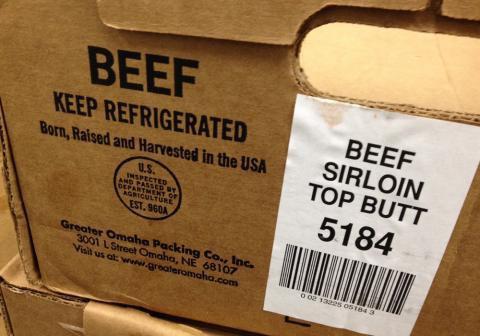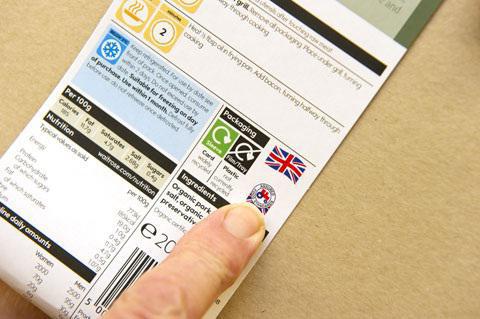Any product on the packaging has a set of not always clear signs, inscriptions and even codes. This is a product labeling, which is the most convenient way to bring information to a potential buyer about its manufacturer, as well as qualitative and quantitative characteristics. In addition, it allows you to track the movement of products at any stage.
In this article, we will talk about what a marking is, what it happens to be, as well as how it determines the country of origin of goods. In addition, we will try to understand the bar coding of products.
What is labeling and what are its objectives
Marking is the application on a package, label, label, tag or control tape of a product of certain information about its manufacturer, date and method of manufacture, purpose, quality, method of transportation, storage and other important information. It performs four main functions:
- informational;
- identifying;
- emotional;
- motivational.
The information function is basic. It includes fundamental and consumer information that duplicates information entered in shipping documents. Thanks to this particular function, the consumer determines the country of origin of the goods, the manufacturer, the purpose of the products, etc.
The identifying role of labeling is to allow the manufacturer, buyer or transport company to locate the goods being transported, wherever they are, at any time. To make this possible, the corresponding labeling of the goods is introduced into electronic systems that allow tracking its location.
Emotional and motivational functions are also designed for the consumer. They give him the opportunity to evaluate the packaging, read the explanatory texts and, as a result, motivate him to buy.
Types of product labeling
Marking, depending on the place of its application, is classified into industrial and commercial. The first type is a text, drawing, or other signs printed on the packaging of goods by its manufacturer. The carrier of such marking may be:
- labels;
- shortcuts
- tags
- inserts;
- hallmarks;
- stamps;
- control tapes, etc.
Trade marking is also a text, signs, symbols, drawings, all printed by the same manufacturer on the packaging, commodity, cashier's checks, and in some cases on the product itself. Its main difference from the production lies in the fact that its information function is largely associated with the indication of information about the manufacturer, and not about the product.
Labeling structure
Mandatory product labeling consists of:
- texts;
- symbols or drawings;
- information signs.

Text
Text is the most common and important element of both production and trade marking. It, as a form of written information, is characterized by a high degree of availability of product data, regardless of the subject of market relations. The text has all the functions of marking, but to the greatest extent - informational and identifying. It is always on the packaging and can be written in any of the languages or even several. With it, the consumer can find out who produced the goods, what they are made of, what the manufacturer’s address is, etc.
Picture
Drawing, unlike text, may not always be present in the marking. It is more common on the production designation of goods than on trade.He is distinguished by a high degree of accessibility and understanding, and he performs a more motivational and emotional function.
But there are exceptions when drawings are applied to the product label informing about its proper operation.
Information signs
Information signs - these are the signs used to determine the aggregate or individual characteristics of a product. They are mainly characteristic for industrial labeling. With their help, the country of origin of the product, its category, quality, operational characteristics, etc. is determined. However, in some cases only professionals can decrypt them. Information signs are characterized by such signs as:
With their help, the country of origin of the product, its category, quality, operational characteristics, etc. is determined. However, in some cases only professionals can decrypt them. Information signs are characterized by such signs as:
- brevity;
- visibility;
- recognizability;
- expressiveness.
Brevity is due to the fact that the characters here are individual words, numbers, letters, figures, symbols. Expressiveness and visibility are characterized by color, shape, a combination of certain symbols, corresponding to the necessary aesthetic requirements.
As for recognition, it is achieved through the use of generally accepted symbols, for the decoding of which special knowledge is not required.
Classification of Information Marks
Information signs are divided into:
- trademarks, by which it is possible to distinguish one manufacturer from another, a trademark is mandatory registered by the relevant patent office;
- conformity or quality, confirming that the product meets specific standards, and that it has passed certification;
- operational, providing the consumer with information about the rules of operation, installation, configuration, care of goods;
- manipulation, informing about the permitted methods of handling, transportation, storage of products;
- warning, warning of the potential danger that the product may carry, and may also indicate actions warning this danger;
- environmental, informing consumers about environmental hazards, or safety;
- dimensional, indicating the dimensions of the package;
- bar coding is a special sign for automatic identification of goods.

The last information sign is mandatory for all products that are exported. We will dwell on it in more detail, since the barcode is used for all foreign trade transactions. In addition, with the help of such a designation, even a layman can learn something about the purchased product.
Bar coding
Labeling products with a barcode is the most common form of automatic identification along with magnetic, digital, sound and radio frequency. The coding system is based on the principle of encrypting alphanumeric characters in the form of alternating strokes with spaces that have different widths.
The barcode can be fully decrypted only with the help of a special scanning device that reads characters printed in accordance with the unified rules and specifications. It is applied to the surface of transport or consumer packaging of almost all domestic and imported goods by means of printing or by gluing a label or a label with it. The absence of such an information sign on a product significantly reduces its competitiveness, and in some cases it is almost impossible to sell it. This is primarily due to the fact that enterprises where the distribution of goods is automated simply do not accept unmarked goods.
Barcode History
Linear coding, which is the prototype of barcode, was invented and implemented in the USA in the 1930s. America was followed by Canada and Germany. Since that time, many varieties of regional, national and various types of bar codes have appeared.This, of course, simplified the distribution of goods, but it brought a number of inconveniences for foreign trade transactions, because in order to decrypt the code of another country, special equipment was needed with the appropriate security.
In 1977, the EAN Commodity Numbering Association was created in Europe, which included 12 countries. When non-European countries began to join it, this system received international status. Today EAN brings together more than 100 bar coding organizations from many countries of the world that are its members. Among them is the Uniscan Russian identification system, which includes more than five thousand enterprises and organizations. She gives codes to enterprises and organizations, not only Russian and CIS representatives, but also other states.
Barcode structure
The barcode is a drawing consisting of alternating strokes of dark color and light spaces of various widths. The unit of this width is considered to be the thinnest stroke or space (0.33 mm). Each digit carrying information is encoded using seven modules, each of which includes two dashes and two spaces. At the beginning and end of the code are placed long edge strokes that define the boundaries of the scan. Each of the EAN codes begins and ends with a start-stop sign 101.
Types of Barcodes
Depending on the type of product, two types of coding are used for its identification: commodity and technological. The first type is intended to determine the manufacturer of products, and the second - to establish storage facilities, parts, containers, materials, assemblies, etc.
The EAN International Bar Code System provides the following types of bar codes:
- EAN-8;
- EAN-13;
- DUN-14.
The first two types can be applied to the product itself, its packaging, labels or labels. Using DUN-14, only transport packaging of products is marked.
The most common EAN-13 code. This we see it on almost all the products we buy. EAN-8 is used for marking small packagings where EAN-13 would occupy more than one-eighth of the space on the packaging.
Prefix and country of origin
In order to understand how coding is carried out, consider an example of product marking with the standard EAN-13 code. It consists of thirteen digits, i.e. 13 digits under the figure. It is worth mentioning right away that, contrary to the popular belief among consumers that the country of origin of the goods is encoded in the first two digits, this is not so. More truly, not always so.
The fact is that these first digits, called the prefix, are assigned by the EAN association and indicate not the state, but the national organization of commodity numbering. Accordingly, an enterprise located in one country can be registered in any and even several national organizations. For example, a Russian company engaged in manufacturing products on the territory of Russia may be registered in the Spanish National Product Numbering, and then the first digits of the code will correspond to it (84) not to Uniscan (460).
But this is rather an exception than a rule. In most cases, the prefix still indicates the country of origin of the goods. Therefore, it will be useful to find out about the first digits of codes for at least the largest states-suppliers of goods to Russia. But more on that later. Now let's look at what the rest of the numbers mean.
Other numbers in the code
The prefix is followed by a number (7th category inclusive), which is the code of the enterprise, which, in fact, produced the marking. After it comes a digit (from the 8th to 12th category), indicating the code of the product itself, i.e. its category. The last digit (13th category) is the control.
Codes of some countries supplying products to the Russian Federation
To determine the country of origin of goods did not cause difficulties, you can remember or write down the codes of the states that are the largest suppliers of products to Russia. Here are some of them:
- Austria - 90, 91.
- Bulgaria - 380.
- Great Britain - 50.
- Hungary - 599.
- Germany - 400, 440.
- Hong Kong - 489.
- Indonesia - 899.
- Israel - 729.
- Italy - 80, 83.
- China - 690.
- Cuba - 850.
- Portugal - 560.
- Poland - 590.
- Slovenia - 383.
- USA, Canada - 00, 09.
- Taiwan - 47.
- Turkey - 869.
- France - 30, 37.
- Czech Republic - 859.
- Croatia - 385.
- Sweden - 73.
Using this knowledge, you will now know for sure which barcode of which country is applied to the product you purchased. But be that as it may, its presence is already evidence that before you are products that have been certified and meet certain quality requirements.








